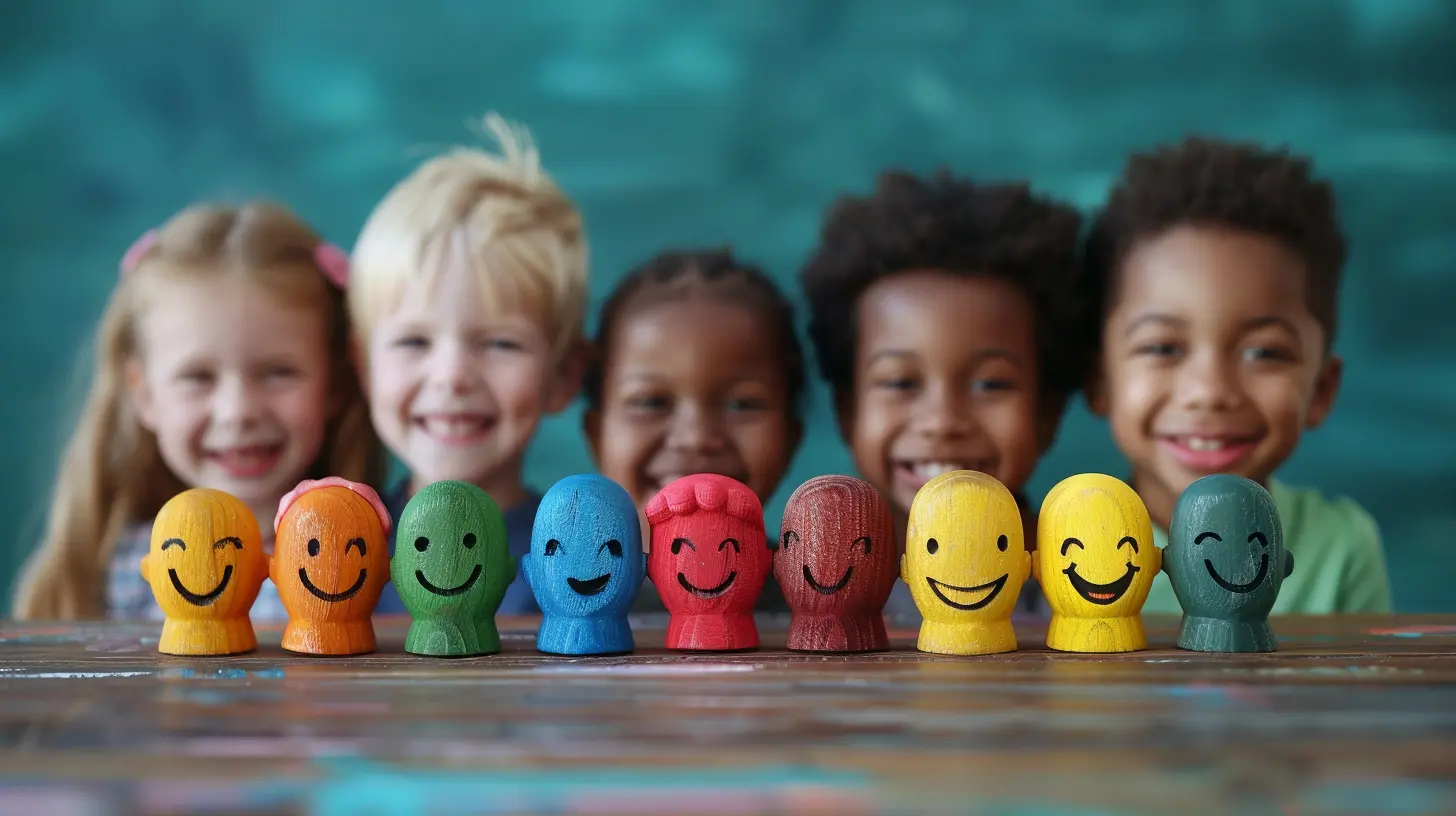"The Teacher’s Guide to Modeling Emotional Intelligence
14 October 2025
Emotions—those colorful threads weaving through every thought, every action, every interaction. As teachers, we don’t just drop knowledge like breadcrumbs for students to follow; we shape minds, hearts, and futures. But here’s the thing: academic success alone won’t carry them through life. Emotional intelligence (EI) is the secret ingredient—the unsung hero of personal and professional success.
So, how do we teach it? Not through textbooks or tests, but through something far more powerful: by modeling it ourselves.
Buckle up, because this isn’t just another guide. This is the teacher’s compass to leading by example, to shaping emotionally aware students, and to creating a classroom where empathy and resilience thrive.

What Is Emotional Intelligence?
Before we dive in, let’s break it down. Emotional intelligence is the ability to:- Recognize, understand, and manage your own emotions
- Recognize, understand, and influence the emotions of others
Sounds simple, right? But in reality, it’s a lifelong practice. EI isn’t about suppressing emotions; it’s about mastering them—like a surfer riding waves instead of drowning in them.
For teachers, emotional intelligence isn’t just helpful—it’s essential. You’re not just teaching algebra or literature; you’re teaching students how to handle stress, navigate conflicts, and build relationships.

Why Teachers Need to Model Emotional Intelligence
Let’s be real—a classroom is an emotional battlefield. There’s frustration, excitement, disappointment, joy, and sometimes, pure chaos. But here’s the thing: students don’t just hear what you say; they watch what you do.If you stay calm during a tough situation, they learn composure.
If you show empathy when they struggle, they learn compassion.
If you admit mistakes and own them, they learn accountability.
Students absorb emotional intelligence the same way they pick up slang—by watching, mimicking, and internalizing it.

The Five Pillars of Emotional Intelligence
Psychologist Daniel Goleman, the guru of emotional intelligence, broke it down into five pillars. Let’s explore them through a teacher’s lens.1. Self-Awareness: Know Thyself
Emotional intelligence starts with you. If you don’t understand your own emotions, how can you guide students through theirs?How to Model Self-Awareness:
- Take a deep breath before responding to stressful situations.- Reflect on your emotions—why does a student’s behavior trigger frustration?
- Use “I” statements: “I feel overwhelmed when there’s too much noise,” instead of “You guys are being too loud.”
- Be honest about emotions: “I’m feeling a little stressed, so I’m going to take a moment to breathe.”
Your ability to recognize and name emotions makes it normal for students to do the same.
2. Self-Regulation: Mastering the Storm
Ever had a day where everything goes wrong? The projector breaks, students won’t stop talking, and you spill coffee on your lesson plan. The urge to snap is real—but self-regulation is about steering the ship, even in rough waters.How to Model Self-Regulation:
- Pause before reacting—count to five, take a breath, recalibrate.- Use calming techniques: Stretch, step outside, or reframe the situation.
- Normalize mistakes: “That didn’t go as planned, but that’s okay! Let’s try again.”
- Show resilience: “Today was tough, but tomorrow is a fresh start.”
By demonstrating control over your emotions, students learn to manage theirs. It’s like emotional osmosis.
3. Motivation: The Fire Within
Motivation isn’t just about pushing through—it’s about finding purpose. Teach students that emotions don’t have to derail progress; they can fuel it.How to Model Motivation:
- Express enthusiasm for learning: If you're excited, they will be too.- Set personal and classroom goals: “Let’s all work toward improving one specific skill this week.”
- Share challenges: “I struggled with writing when I was younger, but I practiced and improved.”
- Celebrate growth: “Look at how far we’ve come!”
Motivation is contagious. When students see you striving, they’ll feel inspired to do the same.
4. Empathy: The Bridge to Connection
Empathy builds relationships, and relationships build trust. If students feel understood, they thrive—not just academically, but emotionally.How to Model Empathy:
- Really listen: Don’t just nod; engage with what they’re saying.- Ask, “How are you feeling today?”—and mean it.
- Validate emotions: “It sounds like you had a tough morning. That must have been frustrating.”
- Use perspective-taking: “Imagine how your classmate felt when that happened.”
Empathy isn’t just being nice—it’s about understanding and responding to emotions in a way that makes others feel seen and valued.
5. Social Skills: The Art of Interaction
Conflict resolution, teamwork, communication—these aren’t just workplace buzzwords; they’re life skills. Students need them, and they learn them from you.How to Model Social Skills:
- Show respect—even when disciplining students.- Demonstrate appropriate conflict resolution: “I see we have a disagreement. Let’s talk it out.”
- Encourage group work and collaboration.
- Role-play different social scenarios.
When students see healthy interactions in action, they naturally adopt them.

Creating an Emotionally Intelligent Classroom
So, how do you create a classroom environment where emotional intelligence flourishes?1. Start with Morning Check-Ins
A simple “How’s everyone feeling today?” can open the door to emotional awareness. Try mood charts, journaling, or a quick share-out.2. Normalize Emotional Conversations
Talk about emotions like they’re part of everyday life—because they are! Discuss emotional challenges and strategies in a non-judgmental way.3. Encourage Mindfulness and Reflection
Introduce simple mindfulness activities like breathing exercises, gratitude journaling, or guided reflections.4. Teach Emotional Vocabulary
Sometimes students act out because they don’t have the words to express how they feel. Teach them specific emotional terms: frustration vs. anger, disappointment vs. sadness.5. Model Self-Care
Show students that taking care of yourself isn’t selfish—it’s necessary. Share how you decompress and handle stress in healthy ways.6. Praise Emotional Growth
Acknowledge and celebrate when students show emotional intelligence: “I love the way you handled that disagreement with patience.”Final Thoughts
Teaching isn’t just about equations and essays; it’s about shaping humans—humans who can navigate life’s highs and lows with emotional intelligence.And the best way to teach it? Live it. Model it. Inspire it.
Because when students leave your classroom, carrying not just knowledge but emotional wisdom, you haven’t just taught them. You’ve empowered them for life.
all images in this post were generated using AI tools
Category:
Emotional IntelligenceAuthor:

Eva Barker
Discussion
rate this article
1 comments
Gisela McSweeney
This article offers valuable insights into the essential role of emotional intelligence in teaching. By modeling these skills, educators not only enhance their own classroom dynamics but also empower students to develop empathy and resilience. Integrating emotional intelligence into pedagogy fosters a more supportive and productive learning environment.
October 26, 2025 at 3:57 AM

Eva Barker
Thank you for your insightful comment! I'm glad you found the article valuable in highlighting the importance of emotional intelligence in education.


